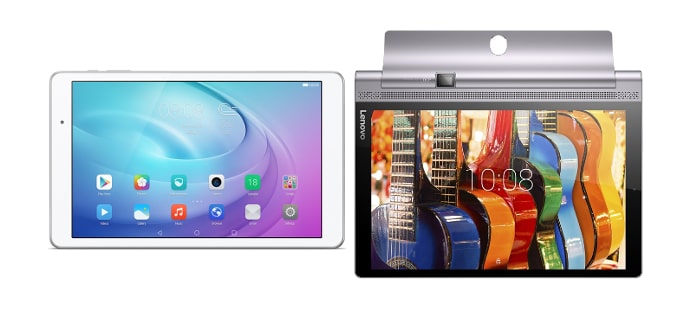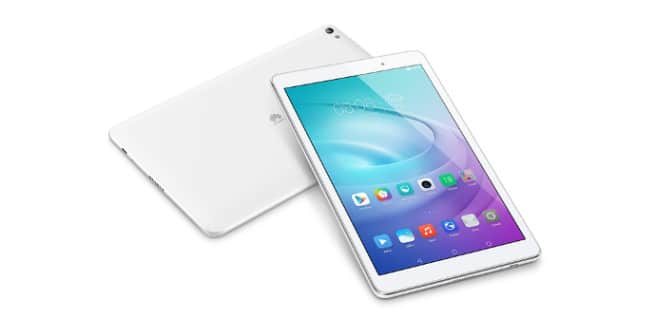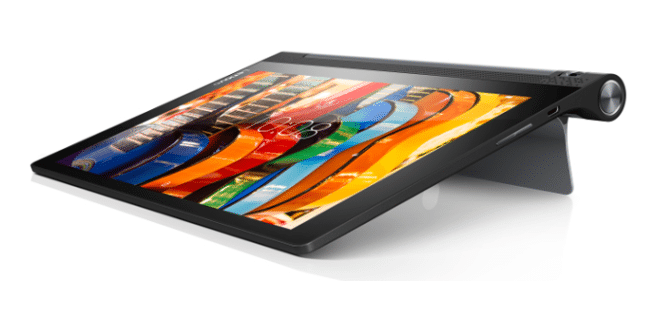
We continue our review of the best alternatives that we can find to the new MediaPad T2 Pro, to help them measure it against their main rivals and thus decide if it is the most suitable tablet for you. At our comparative today, let's go the tablet of Huawei to the mid-range model of the range Lenovo Yoga Tab. As on other occasions, we are going to see that the first one exceeds in Technical specifications to the second, since it is a device that moves between the mid-range and the high-end, but also, therefore, it is expected that it will be more expensive. Is the extra investment worth it or not?
Integrated
Today we find two quite special tablets in terms of design, although for different reasons: in the case of the Huawei, what distinguishes it is the screen that is oriented to use in landscape position, but the design is what we usually see in tablets designed to be used in portrait position, in such a way that when we watch a movie we find more surface of grip as usual on the sides; in the case of the tablet Lenovo, what is striking is the cylindrical support characteristic of the range Yoga Tabs, which allows us to hold it more comfortably as well.
Dimensions
Compare the dimensions of the Yoga tab 3 With those of other tablets it is always complicated, precisely because of that cylindrical support that we have just talked about, and it must be taken into account that the figures we have exclude it, so it is more compact (25,91x15,64 inch against 25,3x16,5 inch) and finer (8,5 mm versus 7,8 mm). In weight, on the other hand, we do have a global measure, and it is a little higher than that of the MediaPad T2 Pro (495 grams against 510 grams).
Screen
In both cases we find a screen with a 16:10 aspect ratio (optimized for video playback) and 10.1 inches, the main difference between the two being the resolution (1920 x 1200 against 1280 x 800) and pixel density (PPI 224 against PPI 149), a point at which the tablet Huawei has an advantage.
Performance
The tablet of Huawei as far as processor (eight cores and frequency of 1,5 GHz versus quad core and frequency 1,3 GHz) and RAM memory (2 GB against 1 GB) is concerned, which should give you an advantage in both power and multitasking capabilities.
Storage capacity
In what the tablet of Huawei it is not so far from the usual in the mid-range and, therefore, is tied with that of Lenovo, it is in the storage capacity: in both cases we have 16 GB of internal memory for the basic model, with the possibility of expanding it externally, since both have a card slot micro-SD.
Camera
For the average user, the cameras section should not be particularly important when choosing a tablet, but for those of you who are clear that you are going to use them frequently, keep in mind that in the Yoga tab 3 we have a single camera 8 MP, while in the MediaPad T2 Pro, we have a rear camera of 8 MP and another front of 5 MP.
Autonomy
We cannot draw definitive conclusions yet regarding the autonomy of the MediaPad T2 Pro (not until we see the results obtained in the independent tests) but for now, and judging by the battery capacity of each one it seems difficult that with their 6660 mAh (and taking into account that your screen is of higher resolution) can beat the Yoga tab 3, which takes advantage of the cylindrical support to house one of no less than 8400 mAh. It does not seem too risky, therefore, betting on the tablet of Lenovo If we do not want to wait any longer and this is a section that interests us especially.
Price
As we already anticipated, the Yoga tab 3 it is most likely a more affordable option, since right now you can get it for under 250 euros even, which serves to give us a good reference of the price for which we may or may not be interested in the MediaPad T2 Pro. In any case, we will be attentive to inform you when the official price is known.

